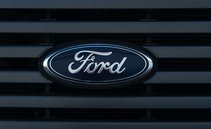Tesla’s Robotaxi event will take place in October, but the markets don’t trust Musk’s empty promises anymore.

Tesla’s stock was down over 5% on Friday when the bell rang, after a more than 8% plummet on Thursday. That brought Tesla’s year-to-date stock price to just 4.7% higher than January 1st, with the decline set to continue next week according to analysts.
The plunge took place after an 11-day rally that brought Tesla’s stock price out of negative year-to-date territory. This rally suddenly stopped after Tesla CEO Elon Musk announced a delay in the August 8th “unveil” event.
That’s when the company was supposed to announce its first robotaxi model, Musk promised investors back in April. The “unveiling” was postponed to October to give more time to Tesla engineers to build the first prototypes.
Robotaxis are self-driving cabs that promise wide operating margins for their owners. Musk has boasted of a robotaxi expansion since 2015 but only delivered empty words so far.
Meanwhile, several start-ups including Alphabet’s Waymo and General Motors’ Cruise have jumped ahead. Waymo’s self-driving taxis already operate in Phoenix, San Francisco, Los Angeles, and Austin.
Likewise, Musk promised a new electric car, the cheapest manufactured by Tesla to date, but some reports showed its plans have actually been scrapped. Tesla’s latest EV was released in 2019, not counting the self-described disastrous Cybertruck whose deliveries started last year.
Counting the empty promises
Tesla is one of the most expensive stocks in the S&P 500 and by far the car manufacturer with the highest market capitalization in the world. That is because investors don’t treat Tesla as a car company but as a tech company.
Musk promised for over a decade to bring a full self-driving car, although Tesla’s deliveries were never really close to achieving it. Tesla’s proprietary autopilot cannot be used without human assistance as drivers must keep their hands on the wheel at all times.
“If somebody doesn’t believe Tesla’s going to solve autonomy, I think they should not be an investor in the company,” Musk said on the investors’ call in April.
What Tesla actually delivered in 2024 is thousands of lay-offs and a swath of shocking news, like the dissolution of the Supercharger team. Tesla’s supercharging network is considered by many as the company’s most important asset.
Meanwhile, competition both at home and abroad is ramping up. Tesla’s Model Y and Model 3 are no longer the most efficient electric cars on the market, as legacy companies like Ford, Mercedes, and BMW proposed their alternatives.
Competition from China is also slashing Tesla’s margins. China is Tesla’s biggest market, but local EV start-ups are quickly catching up. Earlier this year, Shenzhen-based BYD overcame Tesla as the world’s largest EV producer, with plans of expanding into Europe and the US.
It’s hard to see how a robotaxi could solve Tesla’s problems. That is if it ever comes out.





